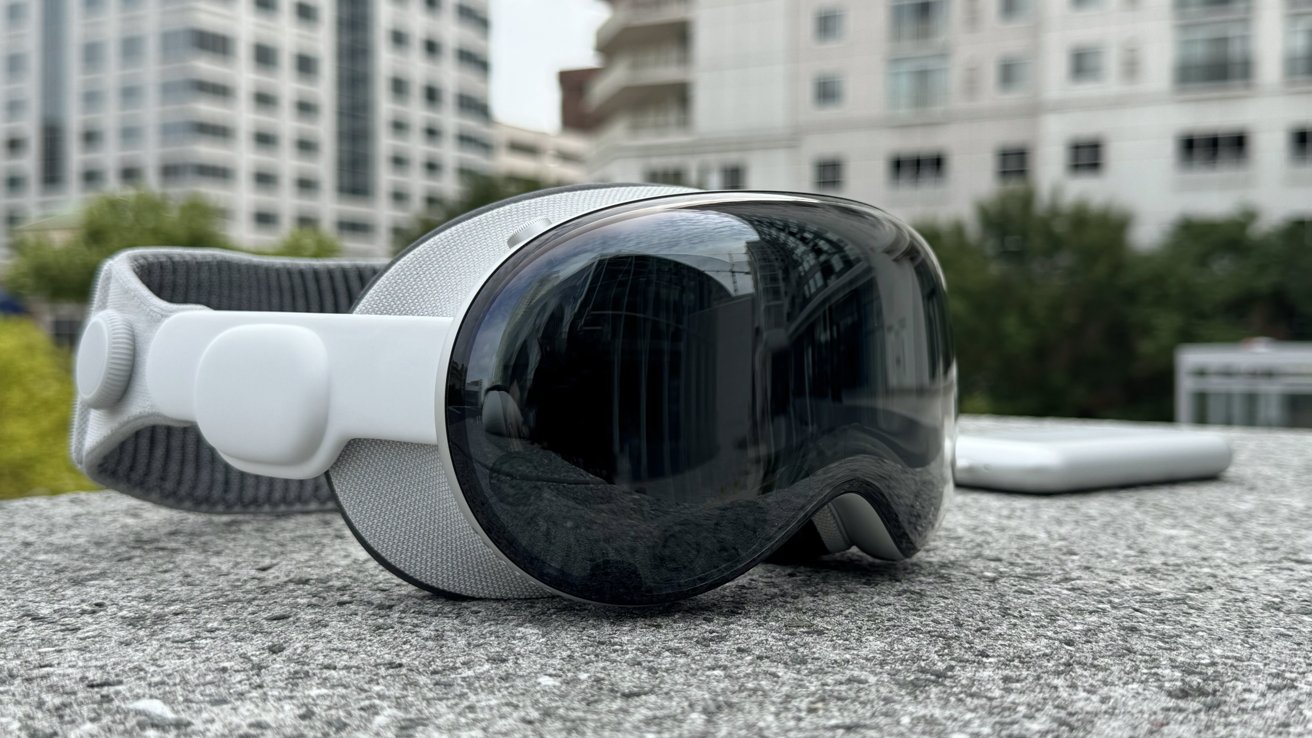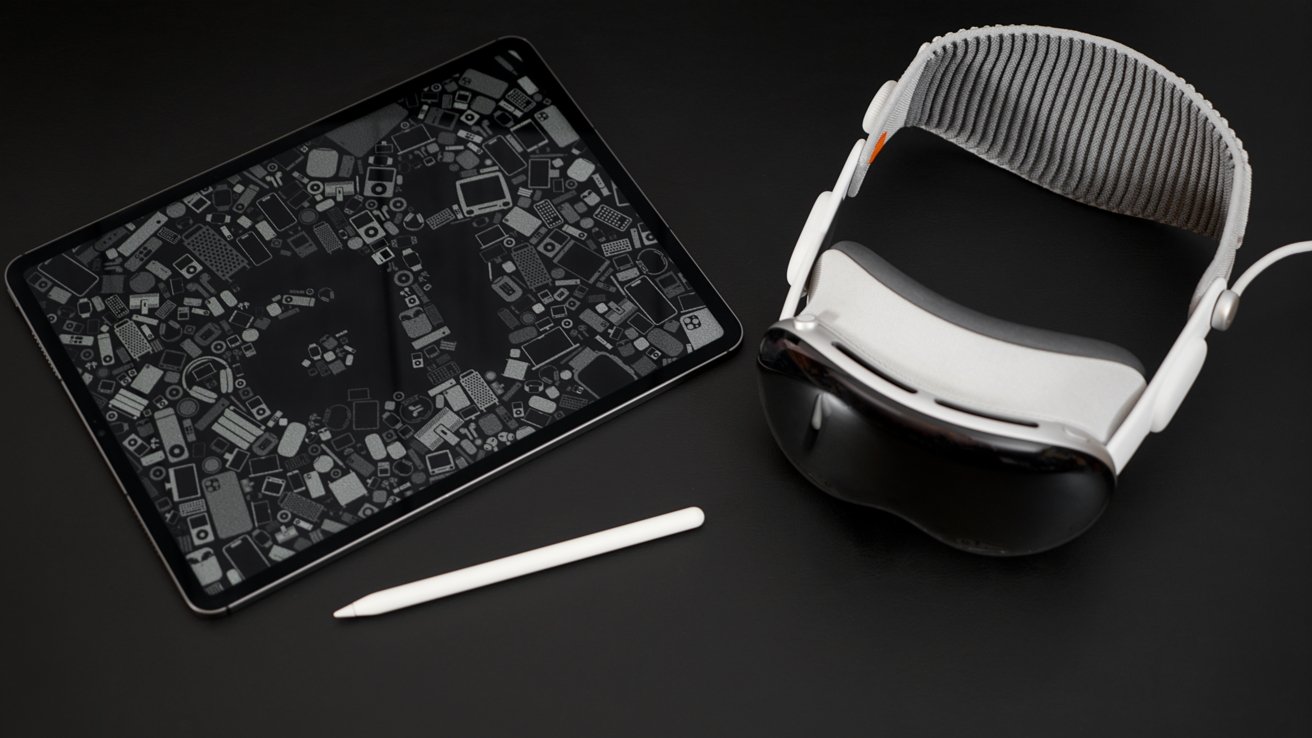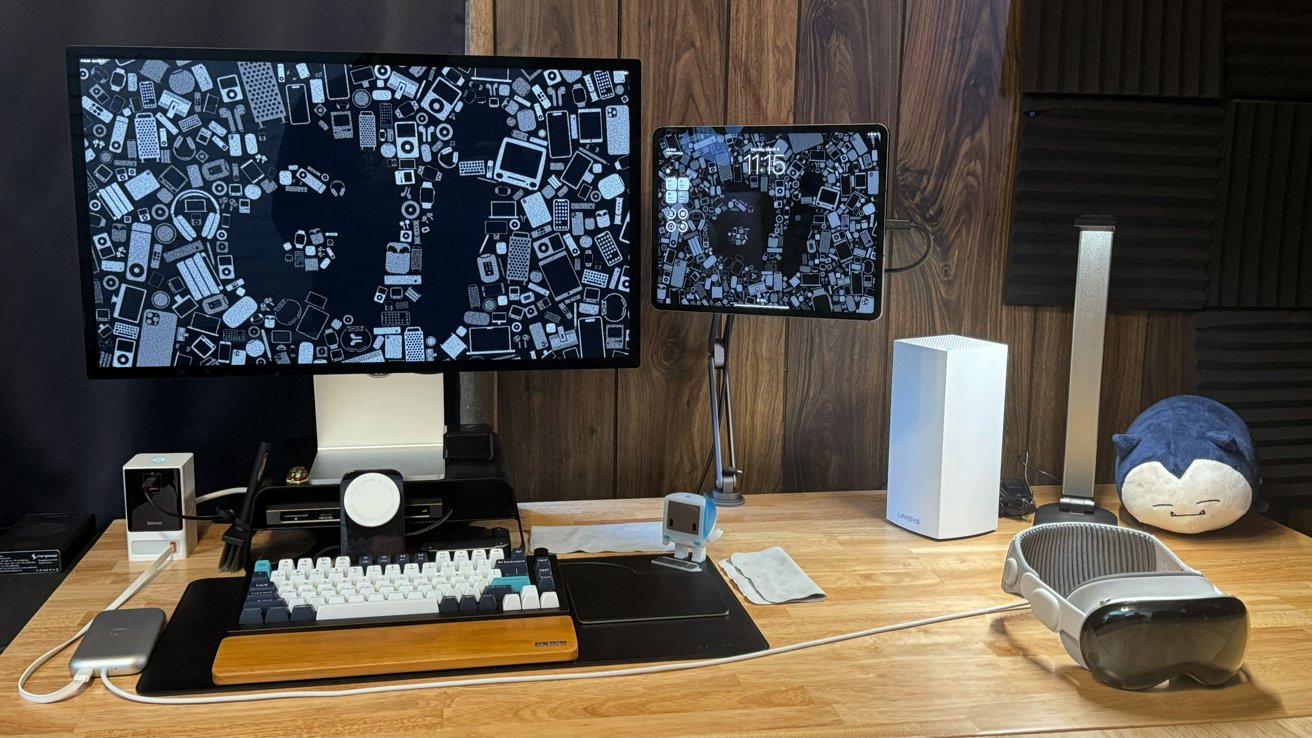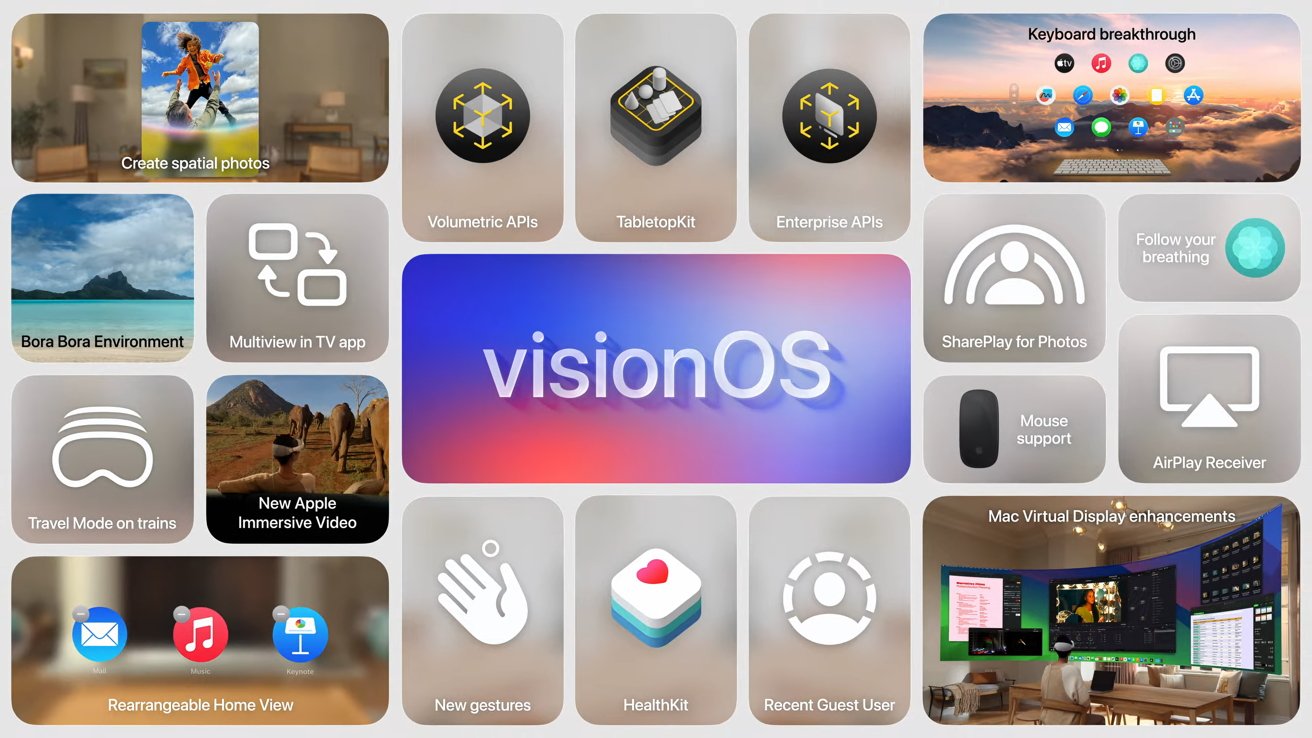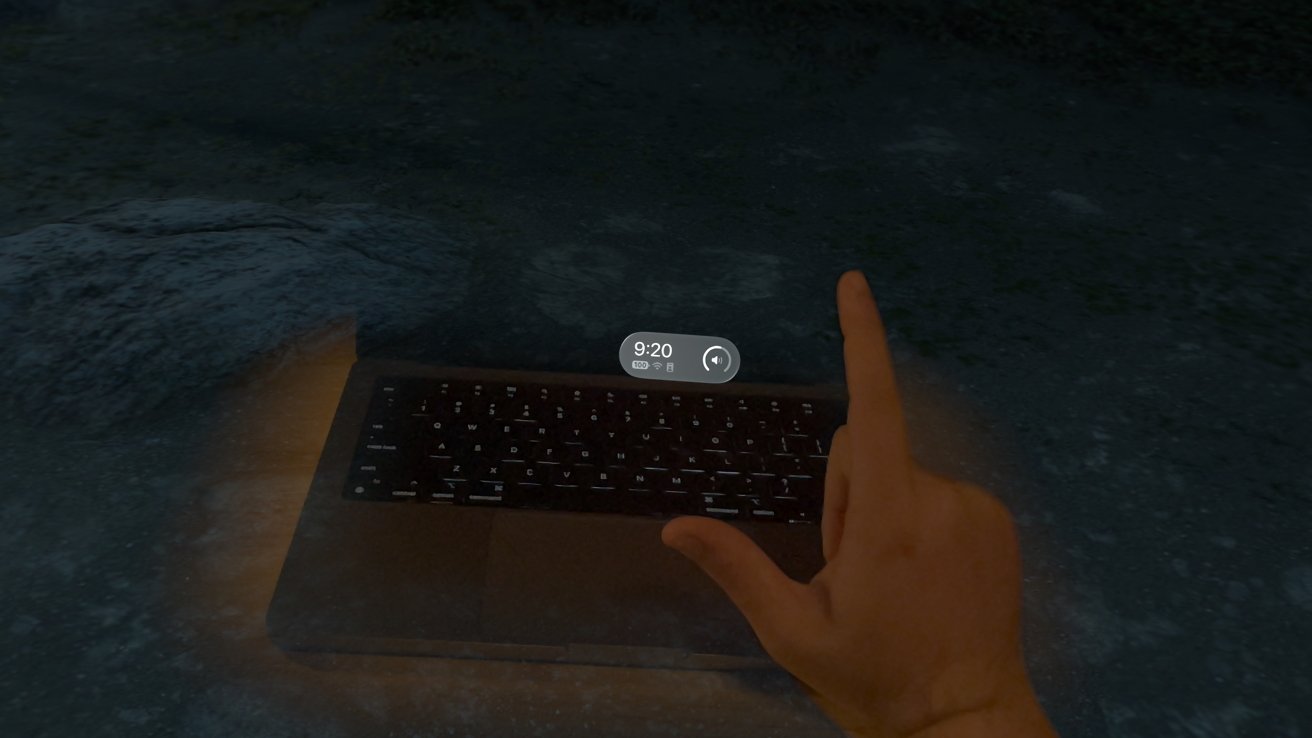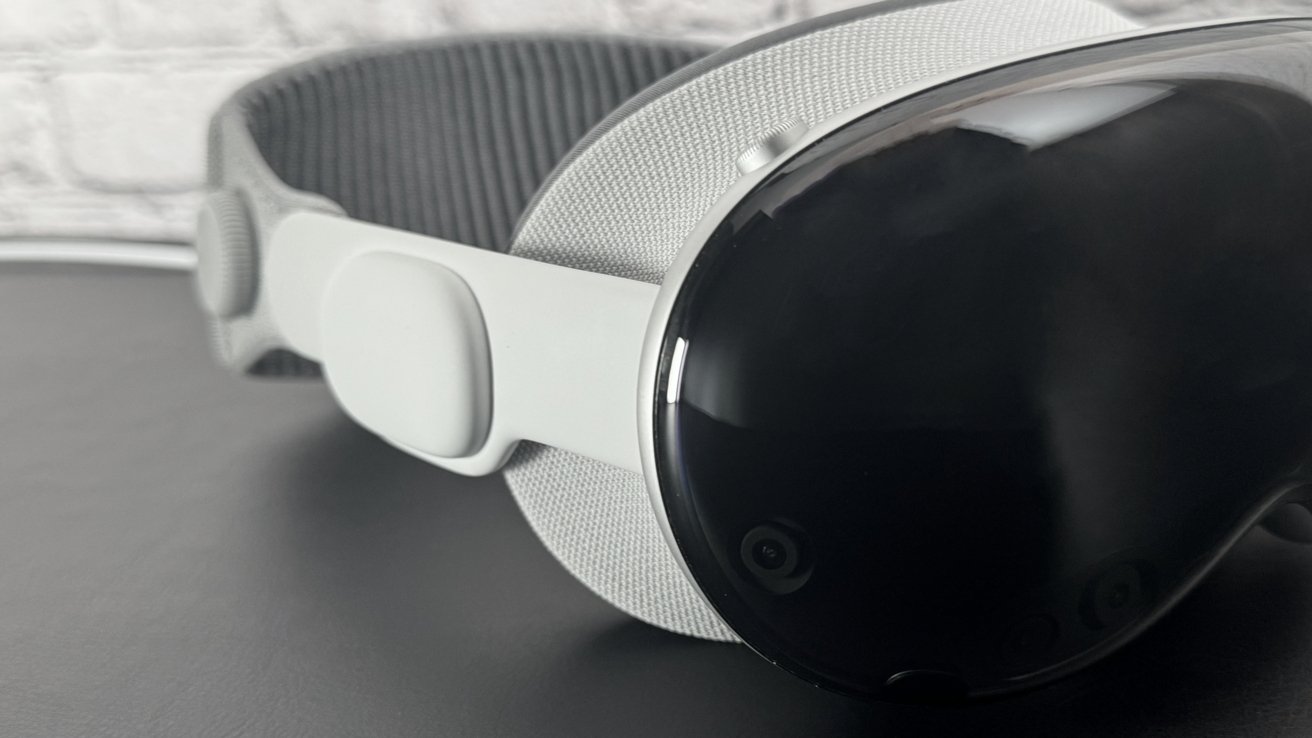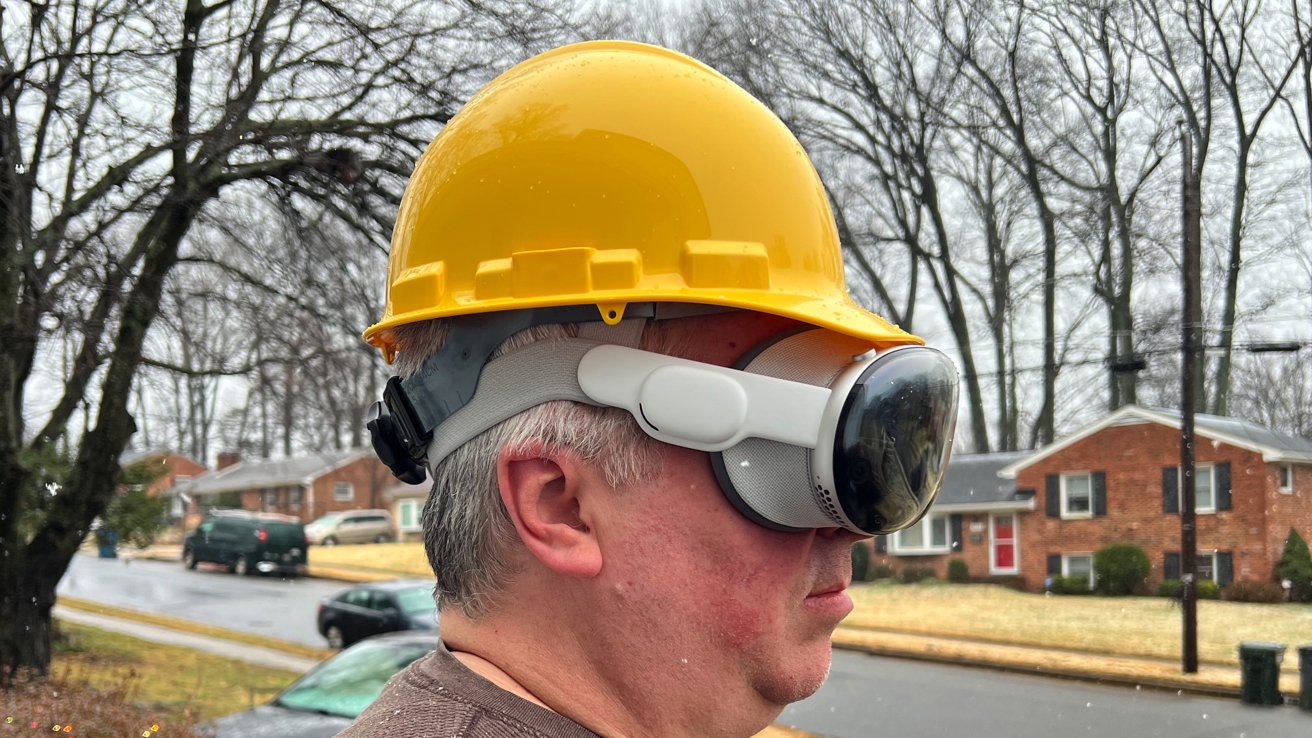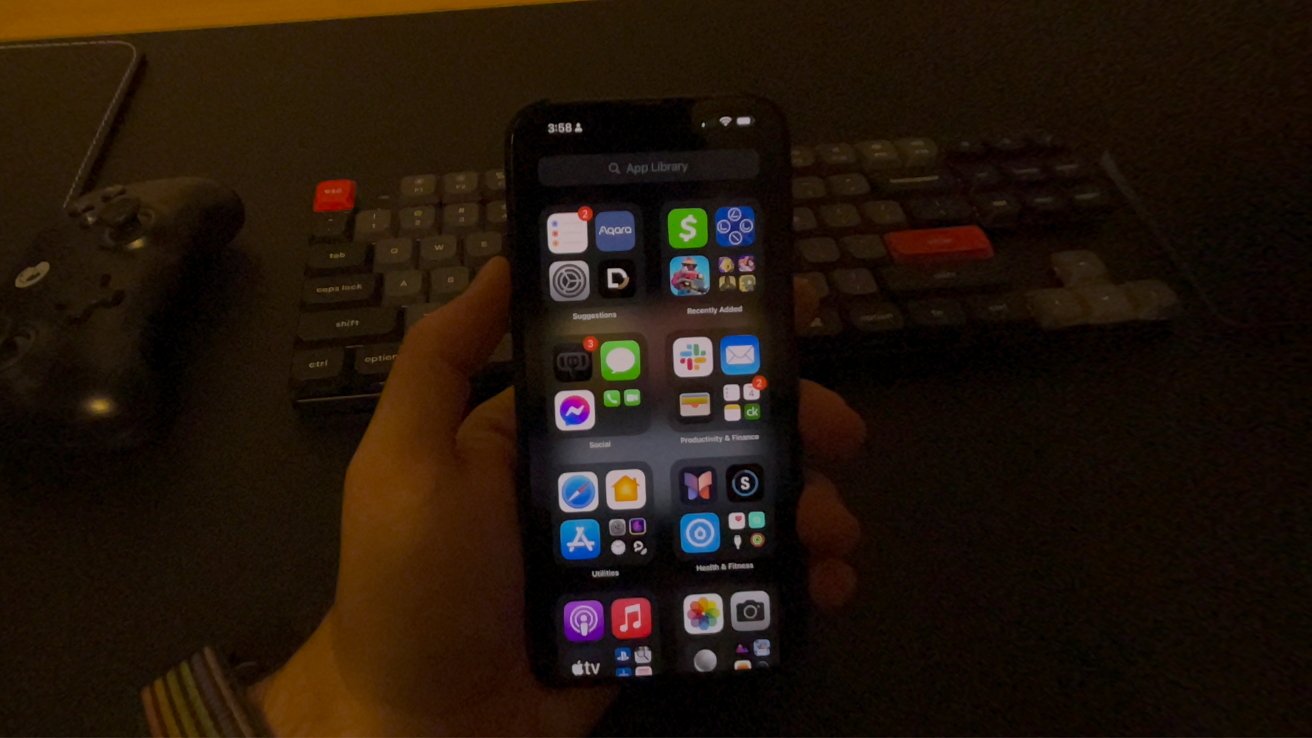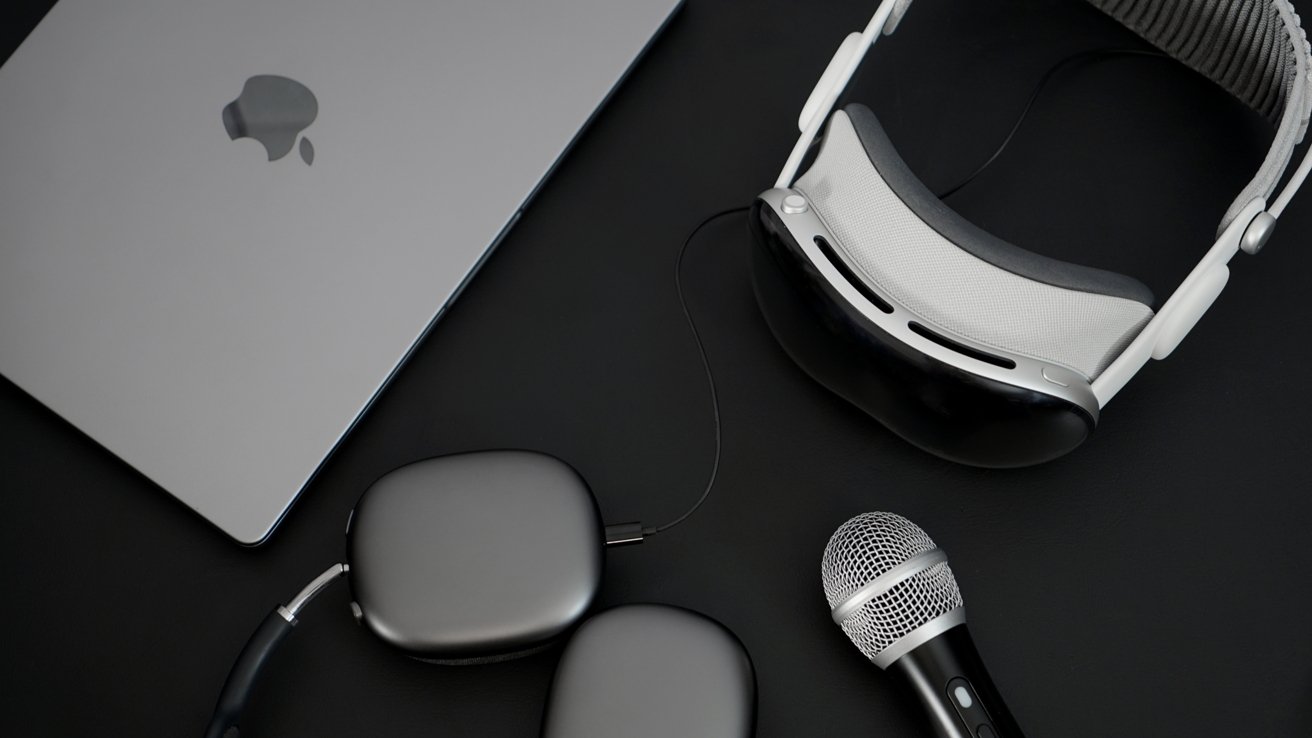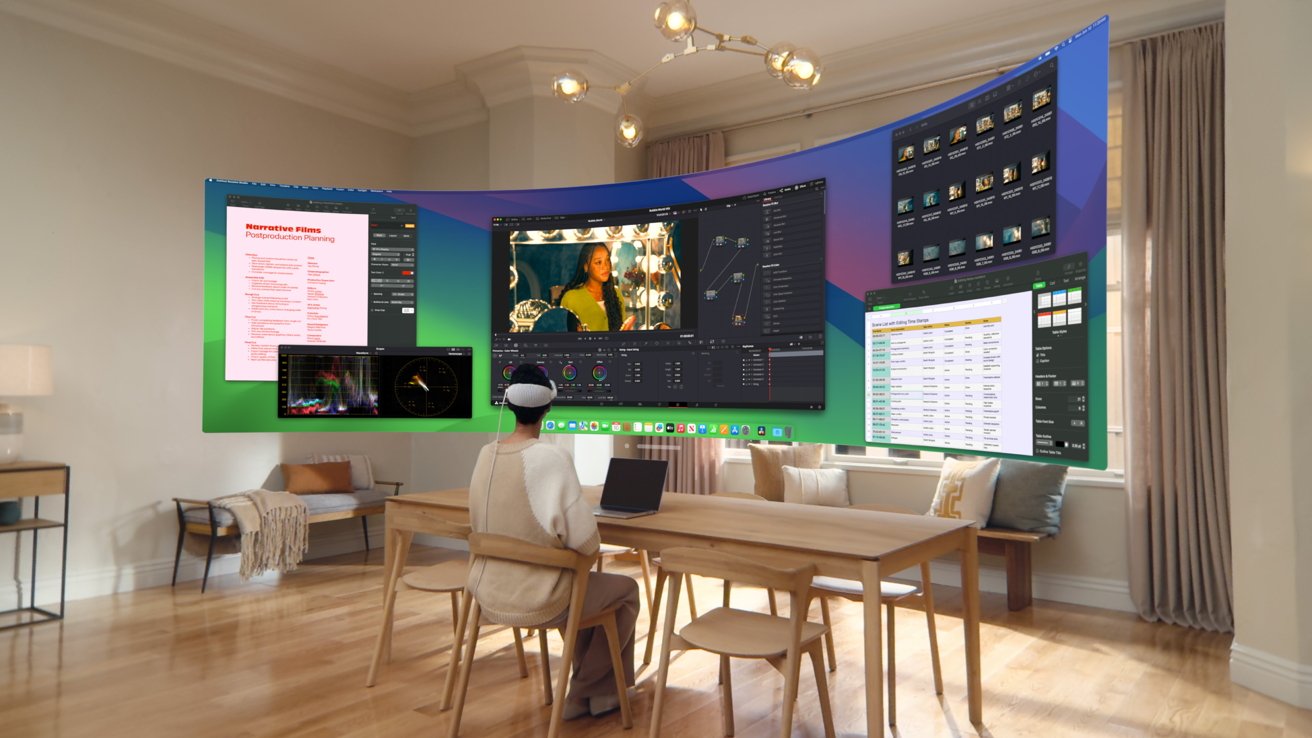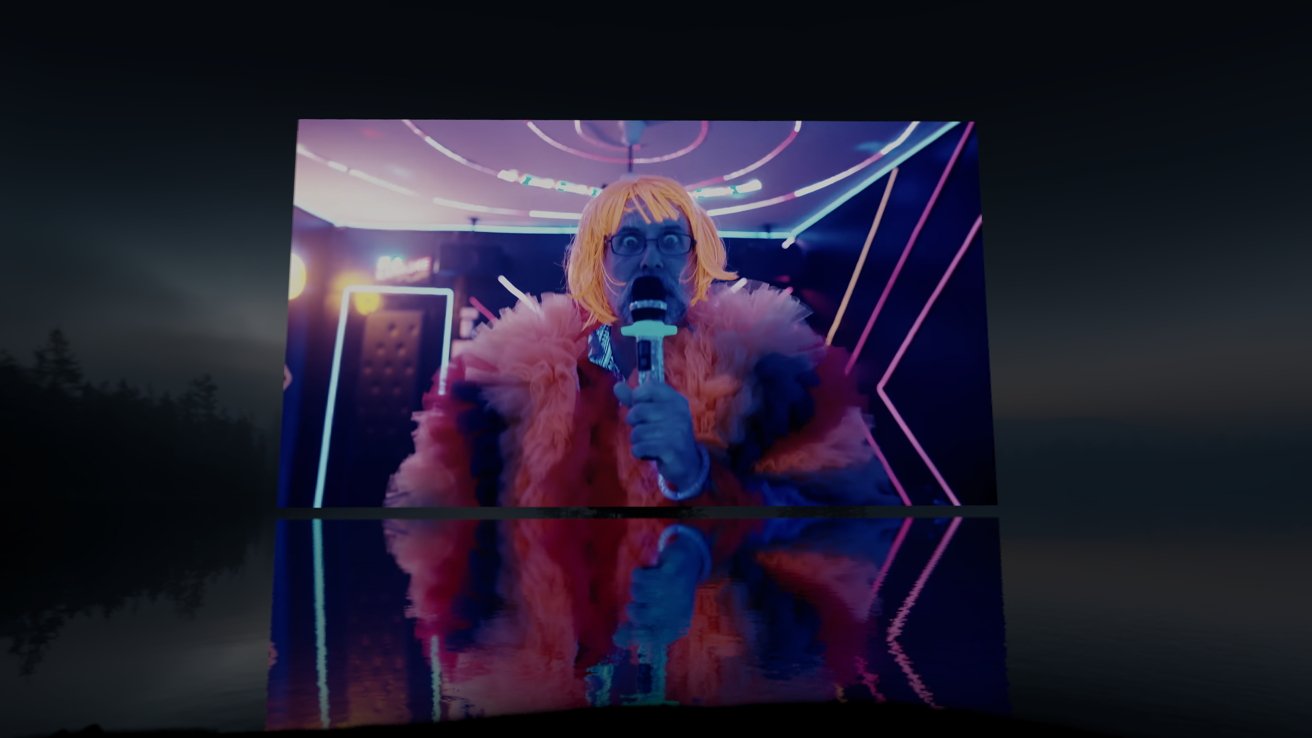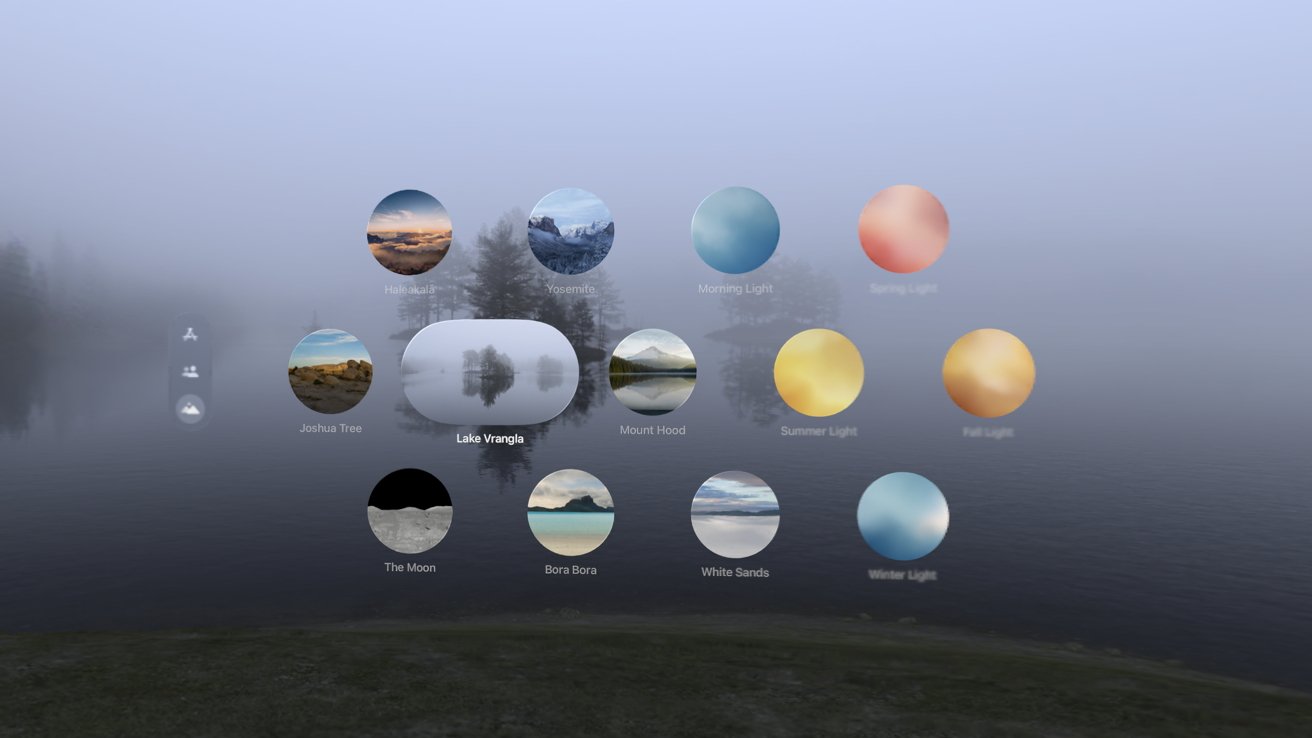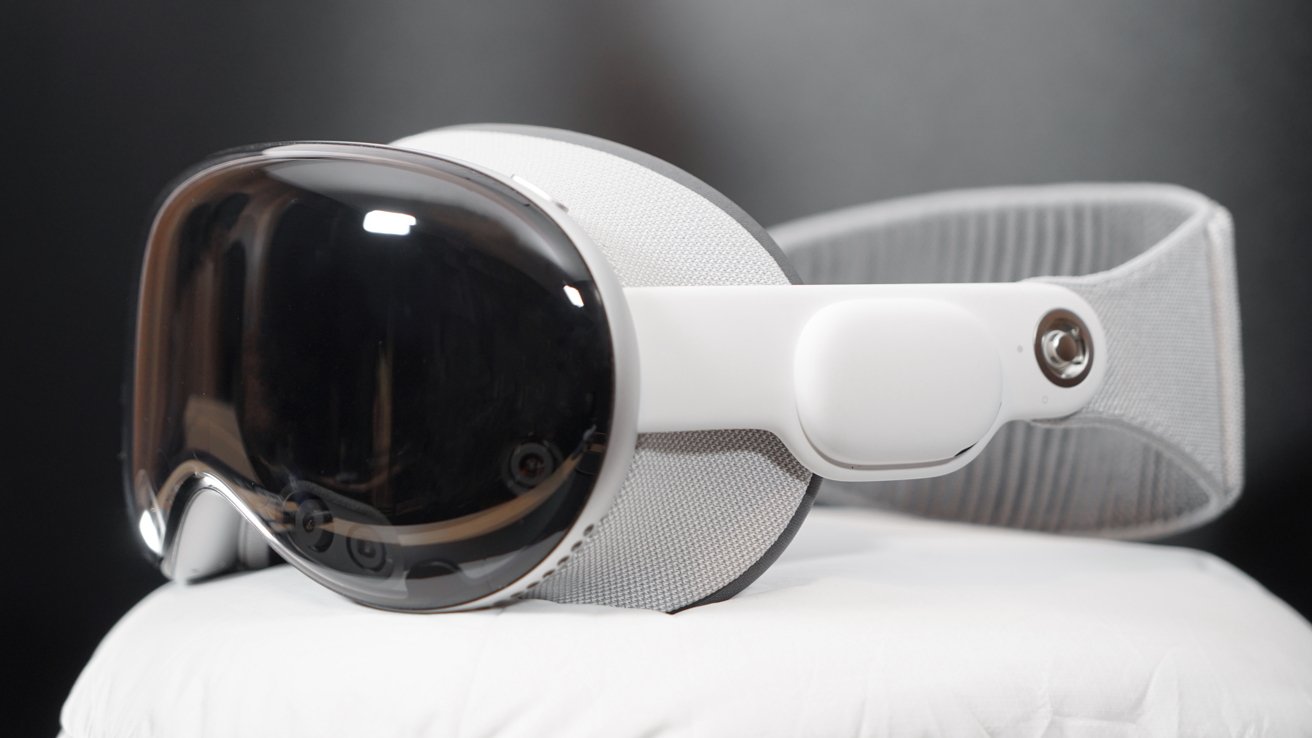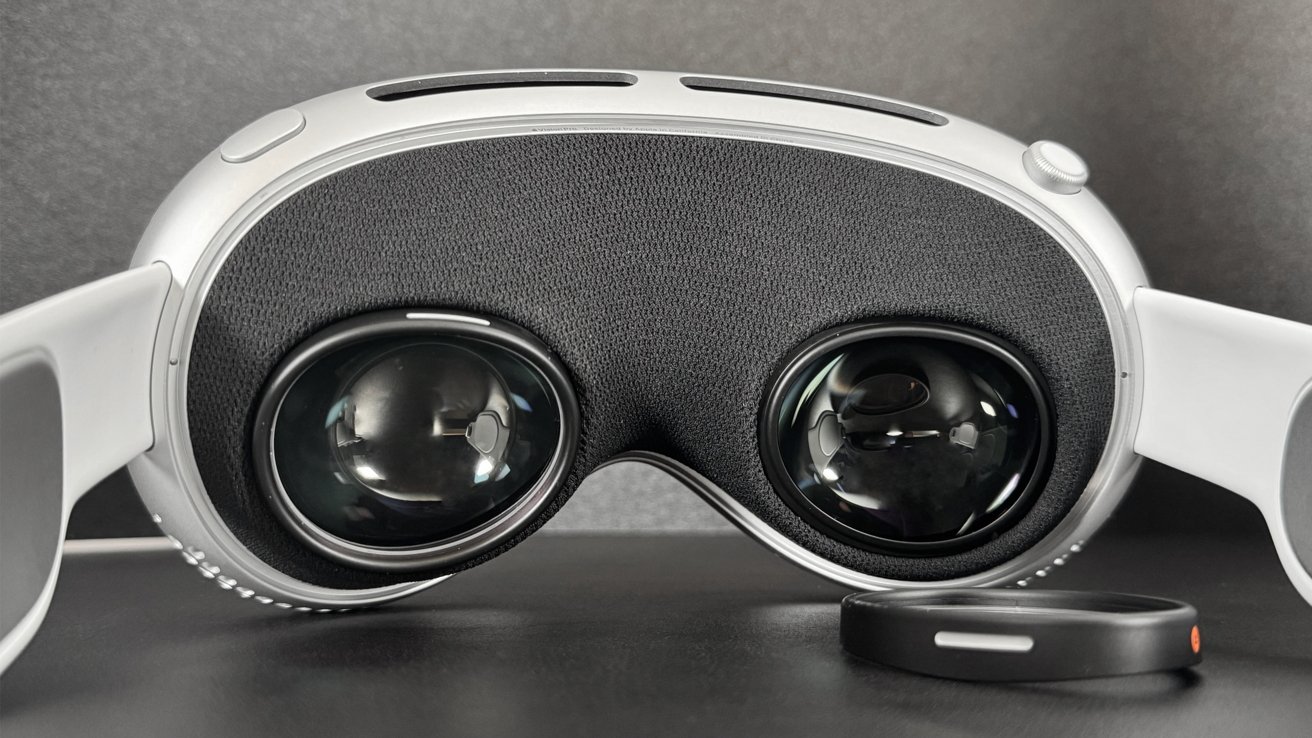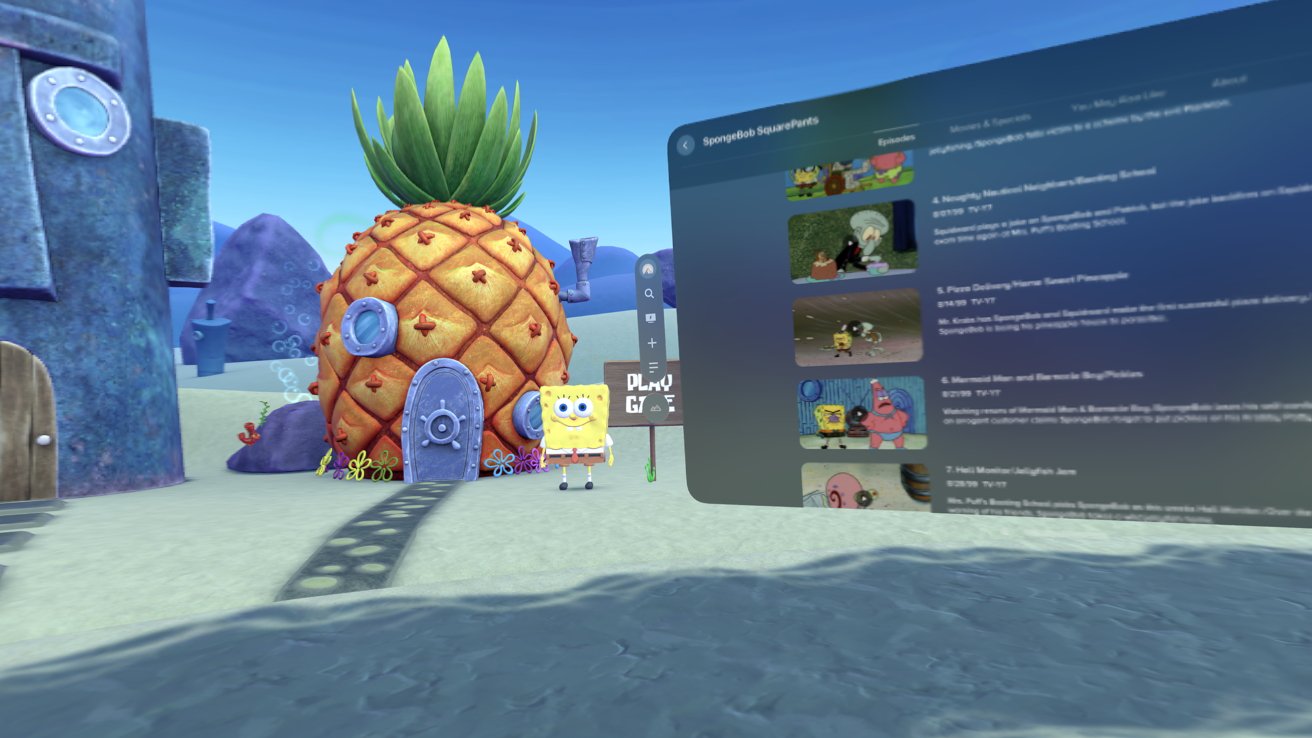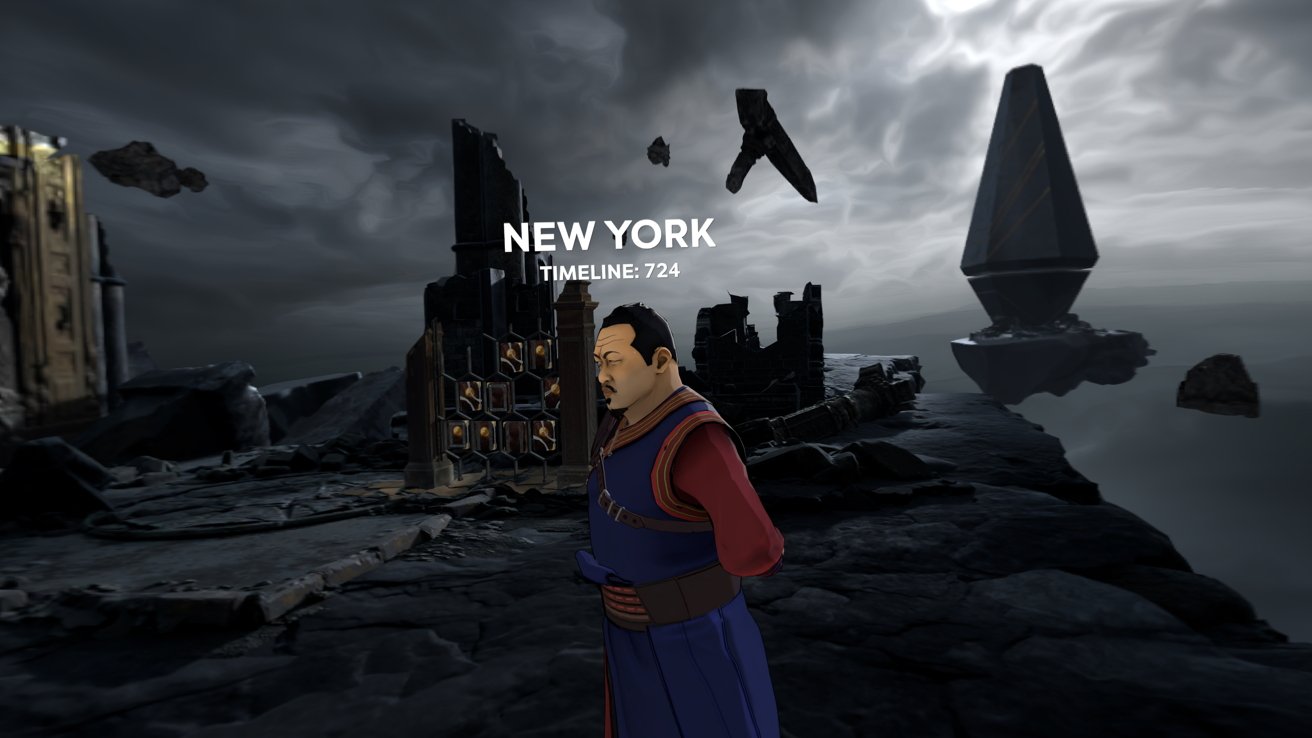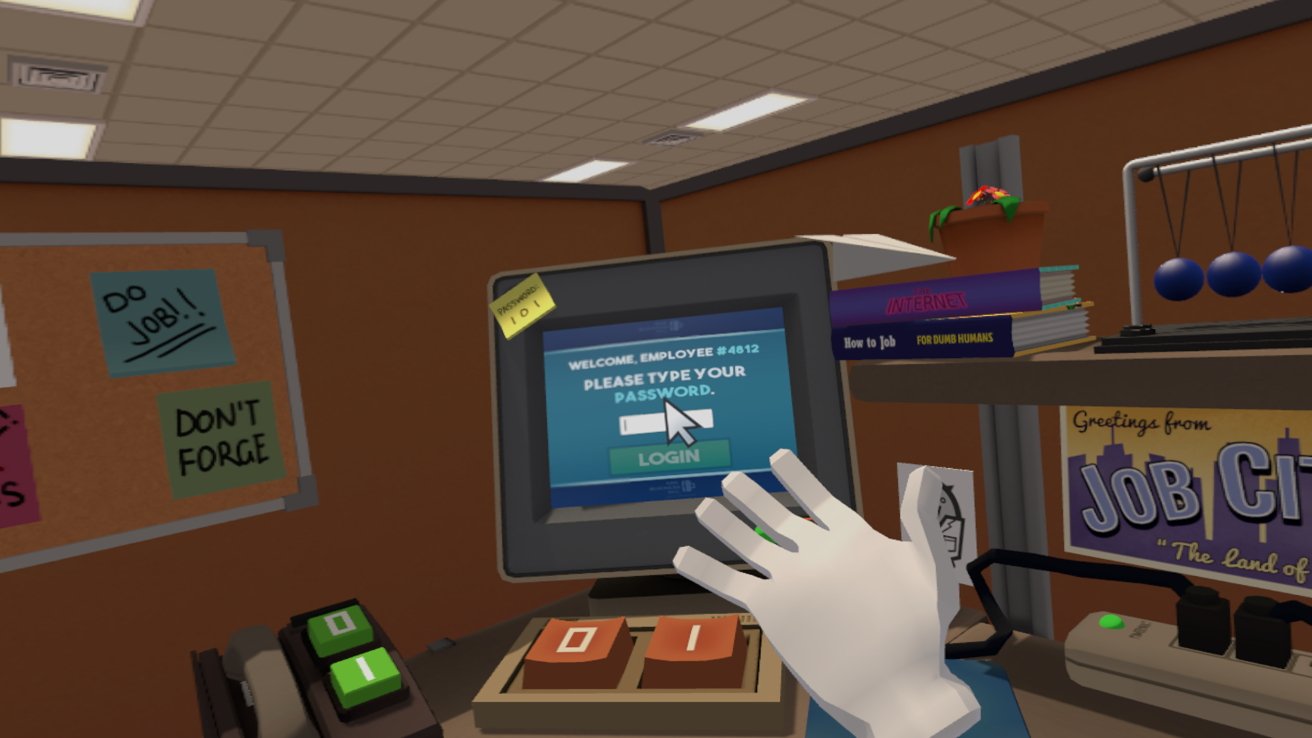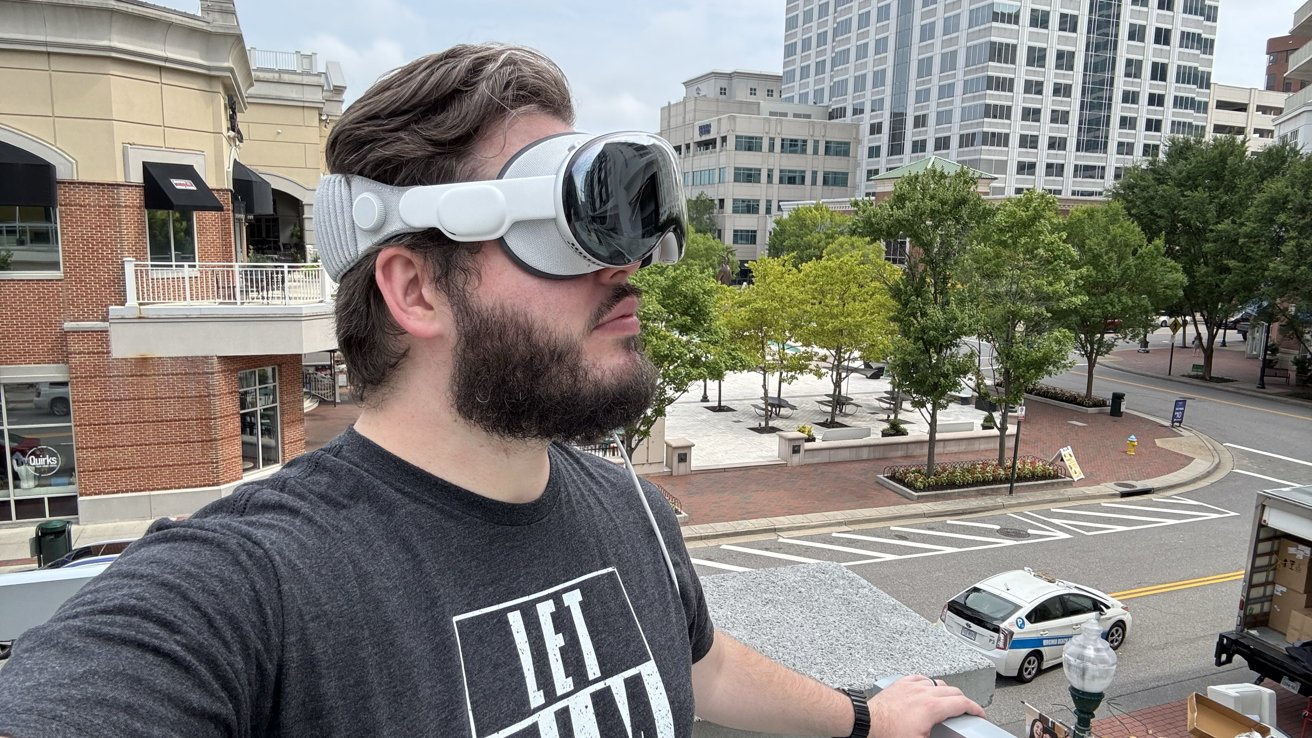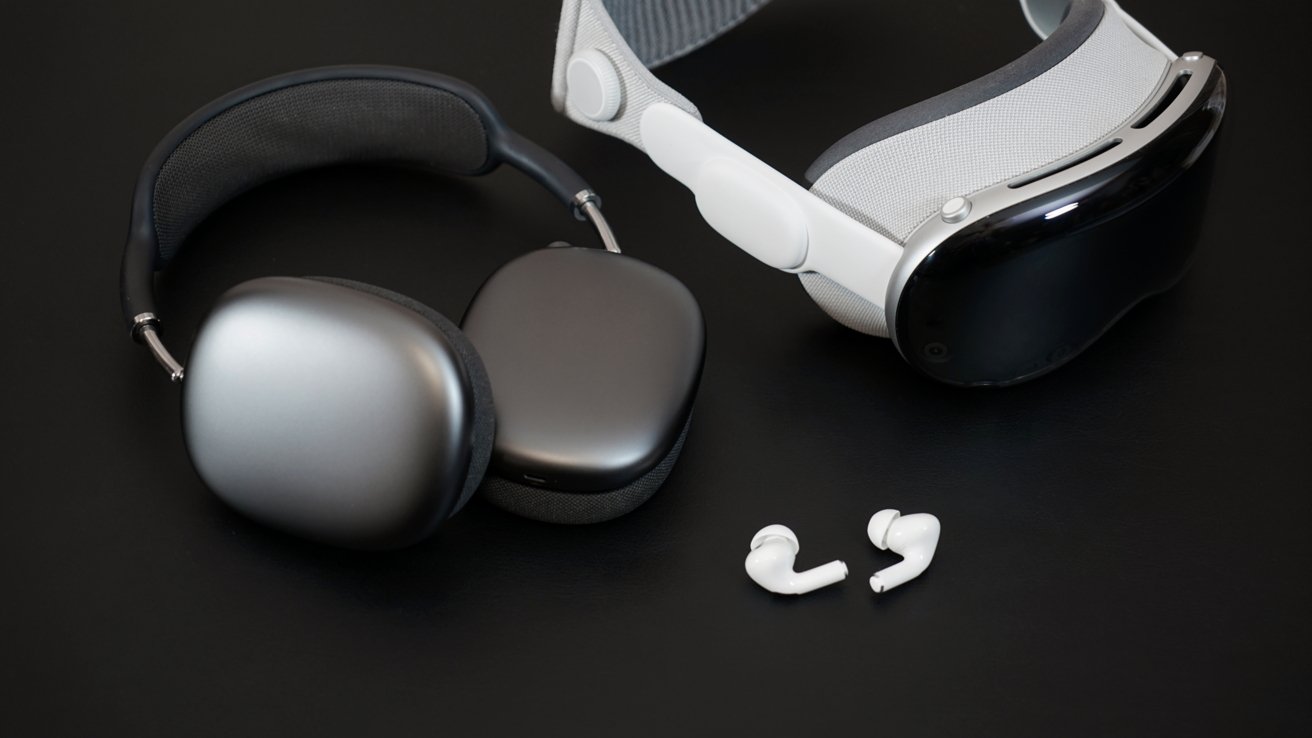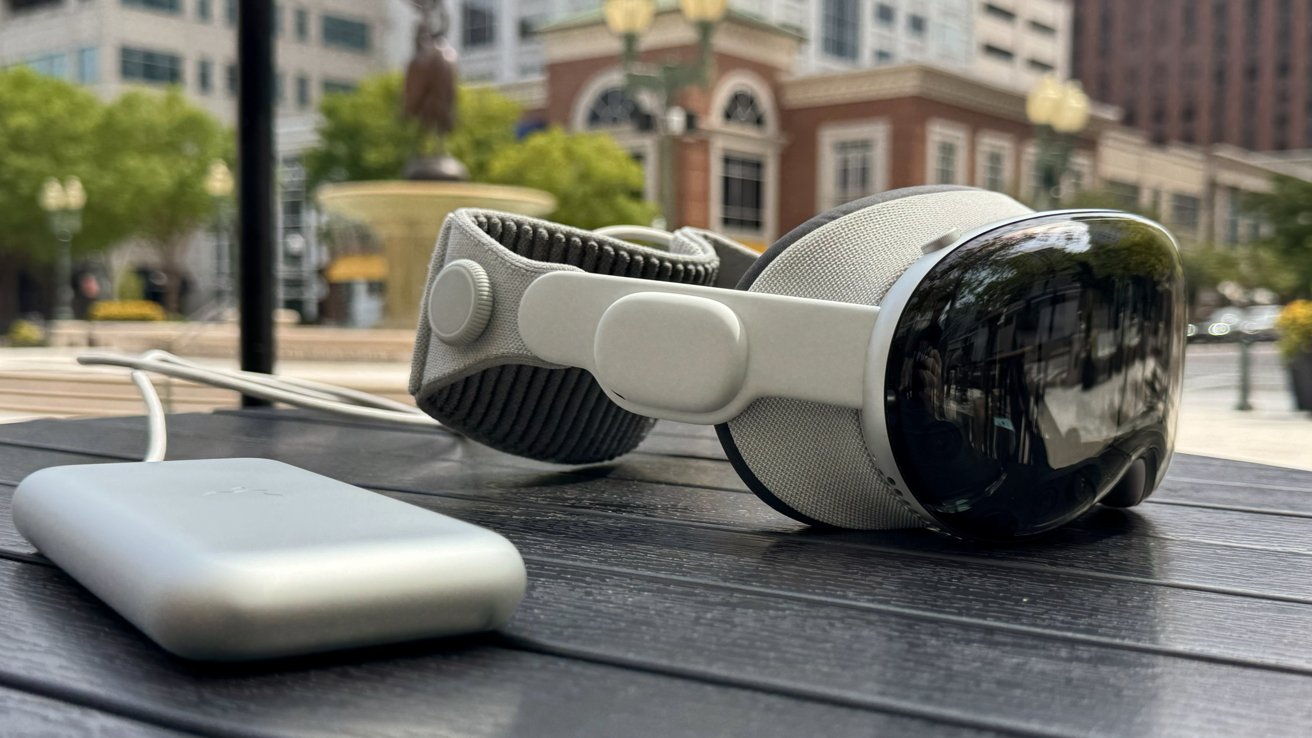After six months with Apple Vision Pro, things feel stuck. A glacial rollout of immersive content, a lack of native apps, and no word of Apple Intelligence make the $3,500 product harder to swallow.
Apple Vision Pro is frustrating.
It is also one of the coolest pieces of technology I’ve ever owned. It is beautifully crafted, the software can feel magical at times, and it makes using apps feel intuitive and whimsical the way iPad did when it launched in 2010.
Whimsy and novelty can only carry a product so far. As I shared in my one-month review, Apple Vision Pro needs evangelists at Apple pushing for more media, apps, and games that take advantage of the format.
Things are progressing but at a painfully slow pace. The issues I’ll mention here and in previous reviews are all related to being an early adopter.
There’s a good chance buyers in late 2025 and beyond won’t have these problems. The platform will be fine, eventually.
But, this review is about today, about six months into the product’s life.
Ask me about Apple Vision Pro, and I’ll say it’s an amazing product. It is an incredibly Apple vision of the future, but it’s still an early product and too immature for mainstream audiences.
Apple needs to move the needle forward on Apple Vision Pro. Or else, we risk seeing it fall to the background until something cheaper revives the lineup a few years from now — not dissimilar to what happened with the HomePod.
Previously on AppleInsider
If you read my one-month review, you’ll know I was hard on some of the shortcomings found in visionOS 1.0 and the lack of native experiences. Just two months after that was published, the new 13-inch iPad Pro with M4 arrived, again challenging me to think about my computing lifestyle.
I had to review that product by living in it as I did with Apple Vision Pro. The headset fell into the background for that first month of use, thanks to my renewed interest in the iPad platform.
While reviewing that product, I did lament not having as much time with Apple Vision Pro, but knew that might change after WWDC. I was right, to some extent, as visionOS 2 addressed many of my initial complaints. More on that soon.
From July to early August, the iPad Pro and Apple Vision Pro ended up living in tandem. I favored the iPad Pro for its amazing display and ability to transform into whatever computer I wanted, but Apple Vision Pro still had its place as the perfect focusing tool.
The March to August Apple Vision Pro timeline:
Things haven’t been quiet for the platform, but it seems developers, creators, and accessory makers are reluctant to support it. Prominent developers have stated that the time and effort in creating native experiences aren’t generating a return on investment.
I still love Apple Vision Pro for its ability to transport me to another place, pile windows around me, and make me feel like I’m truly interacting with software. It’s the same new and whimsical feeling I had previously felt when using iPad as my main computer.
That said, Apple is stuck in a novelty quagmire of its own design. The lack of developer and creator support on the platform is still a problem six months later, and that’s going to be a big problem for the longevity of the product.
Let’s look at the good and bad of these past few months. I believe there’s still a lot of potential for Apple Vision Pro and the visionOS platform, but only if Apple is willing to show more commitment than it is today.
visionOS 2 makes Apple Vision Pro more compelling
The biggest news for Apple Vision Pro in these past six months has to be visionOS 2. The new operating system version was revealed just four months after the product released, and already it showed Apple is listening to customer feedback.
Many of the problems I encountered from visionOS 1 have been fixed. The Home View and Control Center can be summoned with new gestures that don’t require rolling your eyes into the back of your head for a start.
Look at your palm and a dot appears, click that and it opens the Home View. Look at your palm then flip it over to view the clock, battery, and volume. Grab that and slide to adjust volume, or tap it to open the Control Center. Much better.
Apple’s Magic Keyboard (on sale now) and the keyboard of a MacBook being used for Virtual Display will cut through immersive environments. Sadly, this feature doesn’t work with non-Apple keyboards, and it doesn’t seem likely to be a feature anytime soon.
Of course, this is all still in beta and won’t be available to the public until launch. Curiously, Apple didn’t provide a public beta for visionOS 2, but that’s likely because everyone willing to buy Apple Vision Pro and use visionOS 2 is likely already part of the developer program.
The most eye-popping feature of visionOS 2 has to be the 2D photo conversion. The Photos app can take any photo and convert it to 3D, and it is an excellent effect.
New APIs and updates to tracking will make building apps and games for Apple Vision Pro better. Of course, developers will have to actually build for the headset for that to matter.
There’s more to visionOS 2, like improved Personas and an ultra-wide virtual Mac display view, but those features aren’t in the beta or at least not finalized. It is clear visionOS 2 is a step in the right direction and shows Apple’s commitment to improving Apple Vision Pro despite its low volume of sales.
Your mileage will vary, because ours does
This is where I slip into the royal “we” for a bit.
Mike Wuerthele, our Managing Editor here at AppleInsider, is virtually over my shoulder for all of this, which is why he’s also credited on this piece. While this review focuses on me, I’d be incredibly remiss if I didn’t bring up his points, for a different viewpoint about the product.
He’s continued to talk to his friends in enterprise, Fortune 500, and the government. There are high hopes, but things aren’t changing there either.
He had an opportunity to test a pre-release version of the hardware with one of his friends, and then again with more people after release. Both the early previews and the adoptions after release were more about the promise rather than what state of the hardware and software combo actually got delivered.
Pricing remains an issue in big business. There are still no high-volume sales discounts worth a damn, which is a problem for most of the buyers.
Shared profiles still don’t exist in any meaningful way, and at this point, that’s an intentional omission. Yes, we understand that this is because Apple says that it is a personal device, and sells one set of literal software for the facial fit, but this is not a hard obstacle to overcome when the alternative is $3500 per user.
Some kind of shared device system needs to exist, we’ve been told by literally every representative of enterprise, government, or trade work we spoke to. And, they’re incredibly disappointed that this didn’t roll out in visionOS 2.0.
Apple did fix Travel Mode on the train. Without delving into details, we can confirm that it works in visionOS 2.0.
We have seen some interesting solutions to a problem that we pointed out before — a hard hat brim periodically can make contact with the Digital Crown, really screwing up the user experience.
One of the enterprises we talked to has engineered a simple, ugly, and practical solution. They have placed sticky electronics device feet that are taller than that crown on the left and right side of the Digital Crown.
So, when the user shifts position, or the hard hat shifts, there’s no contact with that crown.
And, given the inherent nature of the pass-through video that hasn’t changed one iota and won’t until another headset is released, it’s nearly impossible to do anything precise with it. The pass-through cameras are excellent compared to the competition, but depth while wearing it is not mapped one-to-one versus with it off and is distorted some when you’re not perfectly centered.
There’s no solution for this, no clever work-around.
And, since then, there’s been more attempts at user training in businesses that we’ve spoken to. There is no one generation that seems more willing to use the headset, no one trade that finds it more acceptable than another.
But, even that acceptability is of limited use. Developers for these enterprises are ham-strung by restrictions not just in hardware, but also in software too.
The potential is there. It just seems like Apple doesn’t want to have anything to do with enabling that potential.
That multi-user simulation that Mike used both in 2023 and after launch in 2024 has evolved, but the developers are stymied by things that they know the hardware can do, but they just can’t access.
As Mike said before, an early prototype from one of these friends of the site had an ersatz system built with actual mechanical components, manually operated valves, and gauges — but no fluid, lubrication, or electricity flowing through the system beyond the bare minimum of what’s needed for the simulation.
The Apple Vision Pro hardware just isn’t that good at dealing with a hybrid system right now, even after visionOS 2.0. Still, and apparently for another year unless there are radical changes to visionOS 2.0, they still can’t set trainees loose in a warehouse with a built conveyor belt, for instance, and have them operate it without issues.
Apple Vision Pro review: podcasting through a Mac while wearing Vision Pro works, but it’s a workaround
The fact that there hasn’t been any indication that this kind of compatibility is coming soon is has been frustrating to who Mike continues to talk to. It’s gone beyond irritation for these folks, it’s not clear when this will change, and some big projects are on the verge of shifting to some other hardware.
The path ahead for Apple Vision Pro isn’t completely obscured, but it is perhaps foggier than it was at launch, given the direction that Apple took visionOS 2.0.
When Mike wrote about all this after launch, he predicted that there would be improvements in visionOS 2.0 that would make enterprises happy, but he also said that he expected them more around visionOS 4.0 or later.
He was right. Right now, still, after the first major OS update for the hardware, there’s nothing it makes better that regular Mac, iPad, or iPhone hardware for business, government, defense, or trade work.
This all said, Apple has the money to wait forever for a product line to be a hobby. The first product out of the gate being “Pro” suggests that a non-pro version is coming at some point, and it’s clear that Apple eventually wants something less bulky that can be more ubiquitous.
That may be what enterprise needs. We’ll see.
What they don’t want is solely a media consumption device. That’s what they got delivered with visionOS 1.0, and then reinforced with visionOS 2.0. A media consumption suite is way easier to get for less than $3500 per seat.
All this said, Mike’s come around a small amount with his personal Apple Vision Pro. He said he can live in the Roddenberry Archive Star Trek app, but still hates the Mac monitor relay to the device.
But, his desk is ludicrous. His main monitor is a 32-inch 4K 120Hz display in landscape, and he has two portrait 4K displays.
Oh, and he’s going to write about Submerged when it comes out. As far as we are aware, no other Apple publication has a one-time nuclear power-trained submarine sailor on the team.
More on that when it surfaces.
Apple’s lack of commitment to the platform sends the wrong message
Yes, I said earlier that visionOS 2 is a sign of Apple’s commitment to improving the platform, but only from the OS level. It seems Apple has little to no interest in actually supporting software or entertainment development for Apple Vision Pro.
Old content created for headsets with lower resolution has made its way to the headset through third-party apps. Users even now have the ability to use VR applications on the web through WebXR. That means limited games and experiences, and yes, VR porn, can be launched from Safari to some success.
So, there are baby steps occurring in Apple Vision Pro and wider support. However, it seems Apple isn’t interested in evangelizing its own platform like it has others in the past. Most first-party apps either don’t exist on Apple Vision Pro or are in their compatible iPad forms.
Initial speculation suggested Apple would quickly correct this during visionOS 1 or at least during WWDC. Though that didn’t happen as no new apps were introduced and Apple revealed Apple Intelligence for iPhone and M-series devices, sans Apple Vision Pro.
Sure, Apple has confirmed Apple Intelligence will arrive on Apple Vision Pro in the near future, but it feels odd to leave out such an expensive platform. Early adopters of the expensive headset feel burned by the omission, which creates yet another barrier to entry for potential buyers.
For example, if I find Apple’s Writing Tools to be sufficient to replace Grammarly, I would not be able to run the software on Apple Vision Pro. So, while I could write something like this review on the headset, I’d have to move back to my iPad to run the AI proofread function.
Here are all of the apps running in compatibility mode as of August 2024.
- Books
- Calendar
- Clock
- Home
- Maps
- News
- Numbers
- Pages
- Podcasts
- Reminders
- Shortcuts
- Stocks
- Voice Memos
There isn’t a Contacts app, no concept of Find My even in Messages, and zero support for apps like Weather, Health, or Classical. It seems Apple can’t even act as an example to developers who are still holding out on the platform.
And if income is an issue, Apple should be putting some of its cash hoard to use by incentivizing some of the bigger holdouts to support Apple Vision Pro. Sure, it’s easy to spend someone else’s money that way, but Microsoft withholding Minecraft and Meta withholding Beat Saber isn’t great for the burgeoning product.
If Apple can’t even build native apps or port all of its iPad apps, why should developers bother? At least, that is the message Apple seems to be sending today.
Apple Vision Pro review — a content drought
Immersive video is amazing, and each new episode that launches is a perfect demo of the platform. However, after six months, we’ve received maybe 30 minutes of new content. Apple did promise more is coming, so there is some solace.
The most impressive entertainment piece arrived in the form of “What If?” from Disney Marvel. It is a passively interactive experience that walks the user through events in the multiverse dealing with infinity stones. It takes about an hour to complete, which is more time than all of the immersive videos combined so far.
New environments from Apple are nice, but now that the Home View grid is filled, it makes me wonder if or when a new environment is planned. Paramount+ introduced quite a whimsical “Spongebob Squarepants” environment with interactive bubbles and a jellyfish game, but unless you plan on watching something on that service, the environment is useless.
I hope Apple takes the incredible volume of feedback around environments these past few months to heart. Sitting on Avenger’s Tower in New York or in a “Game of Thrones” space is fine, but kind of silly if all you can do is use a single app.
It isn’t entirely Apple’s fault that the immersive video content takes a long time to create and release. However, it seems very little is being developed in tandem. That, and Apple hasn’t announced any collaborations with existing Apple TV content.
We’re finally getting Apple TV+ inspired screensavers in tvOS 18 five years after the service launched. Let’s hope Apple doesn’t wait another five years to create a “Ted Lasso” soccer pitch environment or “Foundation” planet.
I am only being particularly critical in this space because the immersive video, environments, and games are some of the most compelling aspects of Apple Vision Pro. Today, they are likely the reason I can recommend anyone to buy the product.
It is a failure on Apple’s part not to have some kind of consistent schedule, story, or hype cycle for these portions of the platform. We should be hearing about the special “For All Mankind” Time Capsule-like app to prep us for the next season or an environment with Snoopy’s doghouse.
There are other aspects of Apple’s business that are totally missing from Apple Vision Pro, as well. Where is the Apple Park immersive tour, the Apple Music immersive concert series, or Oprah immersive video podcast series?
Apple can be great at synergy when it wants to, but for some reason, it dropped the ball with Apple Vision Pro.
Apple Vision Pro review — an improving gaming story
I’ve mentioned games a few times so far, but I want to specify a few things here. First, Apple Vision Pro’s gaming story hasn’t stagnated in the same way the entertainment story has.
There are plenty of iPad compatible games that can be played with controllers, not to mention emulators like Delta working too. So, there is at least something there for gamers.
I can imagine an interesting future for emulation on devices like Apple Vision Pro. For example, users could choose an immersive environment modeled after a ’90s bedroom with a giant CRT for playing classic games.
However, the more important gaming story for Apple Vision Pro is the availability of VR and immersive titles. While they are still few and far between, they are appearing at a faster rate than Apple’s original programming for the headset.
Game developers seem to be taking a novel approach for some titles like Cityscapes, Cut the Rope, and Crossy Castle. These titles remind me of Apple’s early attempts at AR games that insert 3D views into the real world through the iPhone display.
I got a kick out of driving around in Warped Kart Racing using gestures to steer and throw weapons. It’s silly fun, and your arms get tired, but it is a novel use of gesture control.
In the absence of Beat Saber, there are other rhythm-based games like Synth Riders and Beat Punch. But the lack of haptic feedback makes these games feel a little flat, though the punching workout style of Beat Punch can be quite fun.
Thrasher, from the makers of Thumper, is an interesting game that uses your finger to guide a snake-like creature through obstacles in a sinister environment. It is fluid and makes good use of Apple Vision Pro’s tracking technology.
Classic VR games like Office Simulator are also starting to show up. Some have complained it is more difficult to play without a controller, but I haven’t found it to be an issue.
That said, I really hope Apple enables the use of third-party VR controllers at some point. Haptic feedback and buttons make a big difference in some games, and I expect some games can’t work without it.
Gaming on Apple Vision Pro has a lot of catching up to do, but I am pleased by the progress we’ve seen so far, if slow. Let’s hope Apple can get some smart partnerships in the future — ahem, Minecraft VR or No Man’s Sky, please.
Someone call Tod Howard and let him know there’s a platform Skyrim isn’t running on yet. I’m sure he’d be surprised.
Apple Vision Pro review — still amazing hardware
A lot of this review check in has focused on the Apple Vision Pro software. That’s simply because my opinion of the hardware hasn’t changed over these past six months.
Apple Vision Pro is still an outstanding piece of hardware that feels futuristic every time I pick it up. I still wear it for hours at a time without issue, and even spend some workdays totally immersed.
The software blends into the environment and the gestures make you feel like you’re really touching the software at times. The vertical stack of technologies represent something only Apple can build.
In case you need a refresher, the Apple Vision Pro is a headset made of aluminum and glass. It has interchangeable cushions and bands that make the device weigh between 21.2 ounces and 22.9 ounces. The external battery pack weighs 12.45 ounces and lasts about 2 hours.
An array of cameras and sensors pass information through the R1 processor to generate a 3D representation of the user’s space on two near-4K displays per eye. The M2 processor can run the iPad and native visionOS apps without issue with its 8-core CPU, 10-core GPU, and 16GB of RAM.
Apple Vision Pro hardware feels years ahead of the available software and operating system. Let’s hope that doesn’t remain the case like it has for iPad.
Apple Vision Pro review — frozen in time
I found it tough to write about Apple Vision Pro this time around simply because it doesn’t feel like a lot has changed in the past six months. visionOS 2 and Spatial Personas stand out, but the overall use case of this device hasn’t changed a bit.
It is still hard to recommend anyone buy Apple Vision Pro unless they have the extra cash and curiosity. Today, there aren’t that many things you can do with the product that isn’t already possible, and easier on other platforms like writing text or viewing media.
The parts of Apple Vision Pro that are truly unique aren’t as fleshed out. You can see every unique piece of content in immersive video in under an hour, and the list of exclusive games is near non-existent.
Apple Vision Pro still stands out as an excellent first attempt in a new product category. I can see a clear vision of what Apple has planned for the platform thanks to this hardware, but the category lives and dies on Apple’s commitment to it.
The global launch and first holiday season with Apple Vision Pro on the market could see renewed interest from consumers. Apple has a chance to convince people without the headset to invest, but so far, it doesn’t seem interested in doing so.
Apple Vision Pro review — pros
- Futuristic hardware only Apple could build
- visionOS 2 addresses many of the initial problems with the platform
- New APIs will help developers build new apps and experiences
- Gaming isn’t a total wasteland, and creators are taking advantage of the unique hardware
- WebXR, emulators, and other options like streaming enable more experiences
Apple Vision Pro review — cons
- Apple’s lack of new native apps sends the wrong message
- The glacial rollout of immersive video isn’t tenable
- No Apple Intelligence at launch feels like a miss
- Developers seemingly have no interest in porting apps and games
Rating: 3.5 out of 5
For those keeping score at home, yes, we’ve downgraded Apple Vision Pro to a 3.5 from a 4. Nothing about the hardware has changed, but it is the stagnating software that is a problem.
I’m happy the gaming story didn’t grind to a halt, but the lack of native apps isn’t ideal. Apple is surely working on addressing a lot of the complaints I’ve raised, but the timing of when and how they are addressed is critical. Even six months feels too slow for many of them.
These scores aren’t set in stone. If Apple can show a renewed interest in promoting Apple Vision Pro and getting developers to care about the platform, the score could shoot back up when we check back in at a later date.
How to buy Apple Vision Pro
Ordering Apple Vision Pro isn’t too dissimilar from buying any other Apple product, except it’s only available from Apple online and physical Apple Stores. Customers will need to have a few things ready to order, like their prescription, to ensure the ordering process goes smoothly.
Apple Vision Pro starts at $3,499 with 256GB of storage. Upgrade the storage to 512GB or 1TB for $200 more at each tier. Optical inserts are $99 for readers and $149 for prescriptions.


